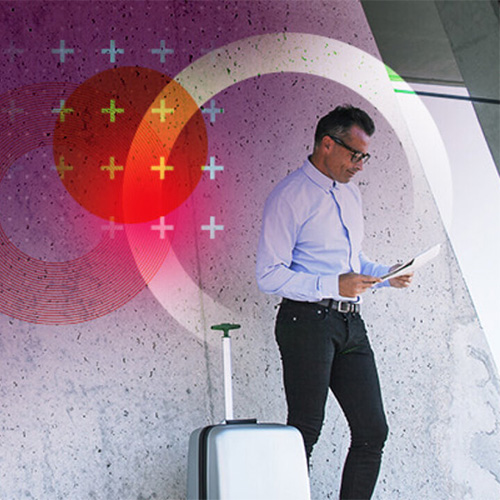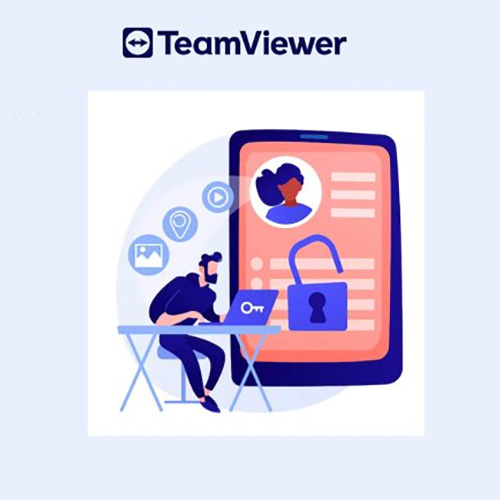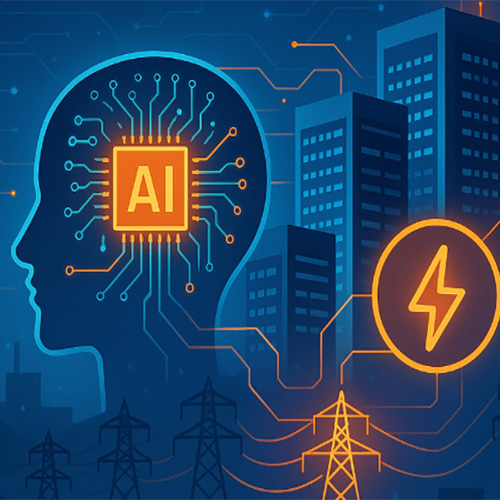
NTT Ltd., the global technology services company, today releases its 2020 Intelligent Workplace Report ‘Shaping Employee Experiences for a World Transformed’, which highlights that the pandemic has put employee wellbeing at the forefront of the business agenda. Almost four-fifths (90.0%) of organizations agree that home-working during the pandemic has been challenging for employees. Connectivity and workspace issues such as bandwidth, a feeling of isolation and a lack of dedicated workspace have all contributed to their concerns. Organizations have to look at every aspect of workplace strategy to optimize employee experience, these include; culture, technology and location.
The report which surveyed 1,350 participants across 19 markets found that 96.0% of the respondents believe employee needs will be at the heart of the future workplace design. Our findings show that 89.0% of organizations agree employees would prefer to have the choice and flexibility to work in an office when it is safe to do so, and 92.0% agreed that face-to-face meeting time is essential to build a sense of teamwork and/or when meeting clients.
As the world continues to adapt to the challenges of COVID-19, organizations must develop a more robust strategy to permanently provide for their distributed workforce. While 92.0% of organizations recognize the value of employee experience as a crucial strategic differentiator, just 49.0% are very satisfied with their current capability.
For now, a third of all businesses (39.0%) have changed their IT policy to help employees work within a new operating model and half (59.0%) have deployed new communication and productivity tools. In many cases, employees have been left to use their personal devices and applications which has rapidly increased the risk of security vulnerabilities. In fact, only 64.0% have increased their IT security capabilities to keep their organization and employees secure.
John Lombard, CEO – Asia Pacific at NTT Ltd. comments, “The connected employee – their wellness and employee experience – must be at the heart of the future workplace strategy. Helping people stay connected and keeping their data secure is key to looking after the workforce and maintaining productivity and effectiveness. Yet this must be underpinned by a long-term strategy for digital transformation, with the roll out of new technologies, policies and of course training so employees feel comfortable with new platforms.”
Establishing the new workplace strategies today for the office of tomorrow
According to the report findings, almost half (59.0%) of businesses are already reviewing the general office design and how best to align with employees’ new needs.
Respondents are somewhat polarised on what to do with office space in general, with over a third (34.4%) of global C-suite execs saying they are looking to reduce office space, yet almost a quarter (24.0%) plan to increase it. That said, most agree that the physical space will have a more defined, flexible use to provide for a more collaborative environment enabling:
· Connecting the distributed workforce: 64.0% will install video conferencing/video collaboration spaces to bring remote and office employees together
· Facilitate creativity and collaboration: 50.0% will implement creative/thinking spaces
· Drive activity-based work initiatives: over a quarter (27.0%) will reduce individual office desk space with 39.0% increasing meeting spaces
Intelligent solutions will empower the employee
We now have access to a vast range of digital platforms and applications, but the rapid adoption of these new technologies has not always been supported with adequate training. To motivate employees to use new technology, it is important to clearly articulate the benefit to them as individuals, especially if they are working remotely.
Just 46.0% of businesses, across the globe, have access to workplace analytics to help them understand and assess new pain points introduced by remote working. By reviewing which applications and features people are using through workplace analytics, businesses can learn how to prioritise, tailor and measure the impact of training to positively impact on adoption, usage and productivity – all of which contributes to the employee experience.
Businesses must set the foundation for the future employee experience now
Having adapted to the pandemic in recent months, over half (55.3%) of the global C-suite strongly agree that now is the time to create the workplace of the future.
Pranay Anand, Senior Director of Intelligent Workplace, Asia Pacific at NTT Ltd. agrees with the need for businesses to act now, stating: “How businesses combat the challenges posed by COVID-19 and re-shape their workplace strategy, will lay the foundation for an entire generation’s future of working. Businesses must react with agility and purpose. We’re seeing companies driving change in real-time compared to months if not years previously. Those who were already ahead of the game in employee experience – making brave, data-driven, human-led decisions are now in a much stronger position in creating a supportive culture. Empowering people and helping them find greater fulfilment in their work is delivering value to these organizations.”
NTT Ltd., the global technology services company, today releases its 2020 Intelligent Workplace Report ‘Shaping Employee Experiences for a World Transformed’, which highlights that the pandemic has put employee wellbeing at the forefront of the business agenda. Almost four-fifths (90.0%) of organizations agree that home-working during the pandemic has been challenging for employees. Connectivity and workspace issues such as bandwidth, a feeling of isolation and a lack of dedicated workspace have all contributed to their concerns. Organizations have to look at every aspect of workplace strategy to optimize employee experience, these include; culture, technology and location.
The report which surveyed 1,350 participants across 19 markets found that 96.0% of the respondents believe employee needs will be at the heart of the future workplace design. Our findings show that 89.0% of organizations agree employees would prefer to have the choice and flexibility to work in an office when it is safe to do so, and 92.0% agreed that face-to-face meeting time is essential to build a sense of teamwork and/or when meeting clients.
As the world continues to adapt to the challenges of COVID-19, organizations must develop a more robust strategy to permanently provide for their distributed workforce. While 92.0% of organizations recognize the value of employee experience as a crucial strategic differentiator, just 49.0% are very satisfied with their current capability.
For now, a third of all businesses (39.0%) have changed their IT policy to help employees work within a new operating model and half (59.0%) have deployed new communication and productivity tools. In many cases, employees have been left to use their personal devices and applications which has rapidly increased the risk of security vulnerabilities. In fact, only 64.0% have increased their IT security capabilities to keep their organization and employees secure.
John Lombard, CEO – Asia Pacific at NTT Ltd. comments, “The connected employee – their wellness and employee experience – must be at the heart of the future workplace strategy. Helping people stay connected and keeping their data secure is key to looking after the workforce and maintaining productivity and effectiveness. Yet this must be underpinned by a long-term strategy for digital transformation, with the roll out of new technologies, policies and of course training so employees feel comfortable with new platforms.”
Establishing the new workplace strategies today for the office of tomorrow
According to the report findings, almost half (59.0%) of businesses are already reviewing the general office design and how best to align with employees’ new needs.
Respondents are somewhat polarised on what to do with office space in general, with over a third (34.4%) of global C-suite execs saying they are looking to reduce office space, yet almost a quarter (24.0%) plan to increase it. That said, most agree that the physical space will have a more defined, flexible use to provide for a more collaborative environment enabling:
· Connecting the distributed workforce: 64.0% will install video conferencing/video collaboration spaces to bring remote and office employees together
· Facilitate creativity and collaboration: 50.0% will implement creative/thinking spaces
· Drive activity-based work initiatives: over a quarter (27.0%) will reduce individual office desk space with 39.0% increasing meeting spaces
Intelligent solutions will empower the employee
We now have access to a vast range of digital platforms and applications, but the rapid adoption of these new technologies has not always been supported with adequate training. To motivate employees to use new technology, it is important to clearly articulate the benefit to them as individuals, especially if they are working remotely.
Just 46.0% of businesses, across the globe, have access to workplace analytics to help them understand and assess new pain points introduced by remote working. By reviewing which applications and features people are using through workplace analytics, businesses can learn how to prioritise, tailor and measure the impact of training to positively impact on adoption, usage and productivity – all of which contributes to the employee experience.
Businesses must set the foundation for the future employee experience now
Having adapted to the pandemic in recent months, over half (55.3%) of the global C-suite strongly agree that now is the time to create the workplace of the future.
Pranay Anand, Senior Director of Intelligent Workplace, Asia Pacific at NTT Ltd. agrees with the need for businesses to act now, stating: “How businesses combat the challenges posed by COVID-19 and re-shape their workplace strategy, will lay the foundation for an entire generation’s future of working. Businesses must react with agility and purpose. We’re seeing companies driving change in real-time compared to months if not years previously. Those who were already ahead of the game in employee experience – making brave, data-driven, human-led decisions are now in a much stronger position in creating a supportive culture. Empowering people and helping them find greater fulfilment in their work is delivering value to these organizations.”
See What’s Next in Tech With the Fast Forward Newsletter
Tweets From @varindiamag
Nothing to see here - yet
When they Tweet, their Tweets will show up here.





























